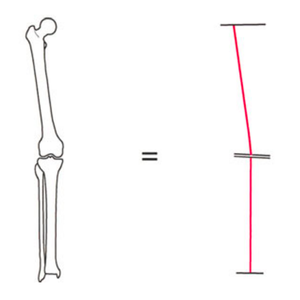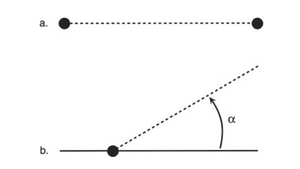1. Line Diagrams[edit | edit source]

- To understand complex bone deformities, it is important to first understand and establish the parameters and limits of normal alignment.
- The exact anatomy of the femur, tibia, hip, knee, and ankle is of great importance to the clinician when examining the lower limb and to the surgeon when operating on the bones and joints.
- To better understand alignment and joint orientation, the complex three-dimensional shapes of bones and joints can be simplified to basic line drawings (Fig. 1a)

- For purposes of reference, these line drawings should refer to either the frontal, sagittal, or transverse anatomic planes.
- The two ways to generate a line (Fig. 1b) in space are either a) to connect two points or b) to draw a line through one point at a specific angle to another line.
- All the lines that we use for planning and for drawing schematics of the bones and joints are generated using one of these two methods.